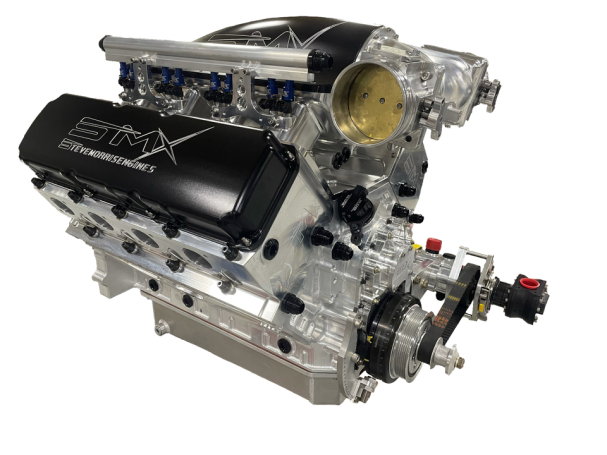Discover Engines for Africa at Our Detailed Auto Components Store
Discover Engines for Africa at Our Detailed Auto Components Store
Blog Article
The Pursuit for Ultimate Driving Power: Exploring the Pinnacle of Engine Efficiency and Technological Breakthroughs in the Automotive Industry
In the world of automotive engineering, the pursuit of optimum driving power has actually been a ruthless pursuit that has unfolded with the advancement of engine layout and the integration of advanced innovations. From the meticulous craftsmanship of burning engines to the quick improvements in electric propulsion systems, the automobile field stands at the cusp of a new age identified by extraordinary performance capabilities. As engineers and scientists dive deeper into the worlds of computational liquid dynamics and check out innovative fuel modern technologies, the perspective of opportunities expands greatly. Keep tuned as we unravel the complex tapestry of technical advancements that are forming the future of automobile power and efficiency.
Evolution of Engine Style

Furthermore, the integration of turbocharging and turbo charging modern technologies has reinvented engine style by enhancing power without considerably increasing engine size. These forced induction systems press the intake air, permitting even more fuel to be ignited, thus creating greater power output from a smaller engine. This innovation has been specifically crucial in improving the performance of smaller sized displacement engines while maintaining gas efficiency criteria.

Performance-Enhancing Fuel Technologies
The implementation of innovative fuel modern technologies has considerably added to boosting engine performance in modern lorries. Biofuels, derived from sustainable sources like algae, corn, or sugarcane, offer lowered emissions and enhanced engine performance. Furthermore, gas ingredients and cleaning agents are being developed to clean engine parts, optimize burning, and lower friction, consequently improving total car efficiency.
Innovations in Electric Propulsion
Significant strides in electrical propulsion innovation have actually transformed the vehicle market, paving the method for a new period of sustainable and reliable transport. Electric vehicles (EVs) are acquiring popularity due to their environmental advantages and improvements in battery innovation, allowing longer driving varieties and shorter charging times. Suppliers are investing heavily in research study and advancement to boost the performance of electric propulsion systems, focusing on raising power output, improving energy performance, and decreasing total weight.
One significant development in electrical propulsion is the development of advanced electric motors that provide higher torque and power density, resulting in enhanced acceleration and total driving performance. In addition, regenerative braking systems have actually been improved to capture and keep energy during slowdown, further improving the efficiency of EVs.
In addition, the integration of clever innovations, such as fabricated intelligence and anticipating analytics, is optimizing the administration of electric propulsion systems, making certain optimum efficiency under different driving problems. These developments in electric propulsion are reshaping the automotive landscape, driving the industry towards a more lasting and energized future.
Impact of Computational Fluid Characteristics
With advancements in electric propulsion pressing the boundaries of automotive innovation, the integration of Computational Liquid Dynamics is playing a pivotal duty in enhancing wind resistant efficiency and improving general performance in automobile design. Computational Liquid Dynamics (CFD) involves making use of computer simulations to examine the flow of air around a lorry, making it possible for designers to anticipate exactly how layout adjustments will certainly affect aerodynamics without the need for expensive physical prototypes. By precisely modeling airflow More Help patterns, CFD permits for the refinement of automobile forms to minimize drag, boost air conditioning, and boost security.
CFD makes it possible for designers to maximize airflow around components such as radiators, engine bays, and wheel wells, adding to enhanced efficiency and overall driving experience. In conclusion, the integration of Computational Fluid Dynamics stands for a significant step ahead in the mission for best driving power and effectiveness in the automotive sector.
Future Trends in Engine Development
In the vibrant landscape of automobile design, sophisticated improvements are shaping the future trajectory of engine development. The future of engine design is marked by a strong emphasis on sustainability, effectiveness, and performance. Producers are increasingly concentrating on developing engines that not only deliver high power outcomes but additionally prioritize environmental duty by improving and lowering emissions gas effectiveness.
One famous trend in engine innovation is the rise of electrification. Crossbreed and electric powertrains are acquiring grip as viable alternatives to conventional combustion engines. These innovations use the capacity for significant reductions in carbon exhausts and enhanced power efficiency, aligning with international initiatives to fight environment modification.
Moreover, innovations in products scientific research and manufacturing methods are allowing the manufacturing of lighter and more sturdy engine elements. This shift towards light-weight products such as carbon fiber and light weight aluminum alloys adds to boosted performance and fuel economic situation.
Verdict
In final thought, the pursuit of utmost driving power in the vehicle sector remains to drive innovations in engine design, fuel innovations, electric propulsion, and computational liquid characteristics. The advancement of these modern technologies is forming the future of engine technology, leading the way for much more effective and effective cars (engines for africa). As the industry remains to push great post to read the borders of what is feasible, we can expect to see even a lot more cutting-edge advancements in the mission for peak performance
One of the crucial turning points in engine layout development is the shift from standard carbureted engines Homepage to contemporary fuel-injected systems. By exactly metering the gas delivery to each cyndrical tube, fuel-injected engines enhance burning, resulting in better performance and lowered environmental effect.
In addition, the combination of turbocharging and turbo charging modern technologies has transformed engine style by boosting power without considerably enhancing engine dimension (engines for africa).The execution of sophisticated fuel innovations has considerably added to improving engine efficiency in modern vehicles. Additionally, fuel additives and detergents are being developed to tidy engine parts, maximize burning, and minimize friction, consequently increasing overall automobile performance
Report this page